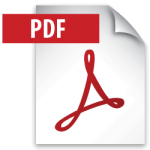
Preface of proceeding
Track: Business Management & Economic Studies
Demand Leakage from a Local Small Airport to a Regional Main Airport
Pages 1-07
Yu Morimoto
Abstract
This paper investigates traffic demand leakage from local small airports to regional main airports. To capture the factors that affect the airport choices of passengers, conditional logit analysis was implemented utilizing Japanese micro data. The target of the statistical analysis is the traffic demand of Kitakyushu city that has the Kitakyushu Airport (KKJ), a local one. The choice set of passengers consists of KKJ and the Fukuoka Airport (FUK), which is regional. The main results are as follows: First, 79.3% of passengers utilize KKJ as long as it is directly connected to the destination airport. However, 0.9% only of passengers choose KKJ if it is not. This implies the importance of direct flight services. The second result is ground access time and scheduling costs have negative effects on airport choice, indicating that improving ground access and attracting flight frequency are possible policies that could be utilized to promote the local airport. Utilizing the results of the data analysis, the effects of potential policies was simulated. A one-minute decrease in the access time to KKJ raises the probability that KKJ will be chosen by 1.1% and a one-flight increase on the Tokyo-KKJ route raises the probability by 0.14%.
Perceived Effectiveness of Public Service Advertising: A Case on Tobacco Counter Marketing Campaign in India
Pages 08-15
Muruganantham Ganesan, Dharun Lingam Kasilingam, Esther Princess
Abstract
Advertising is a universal means of communication to the consumers in a way to showcase one‟s product or service. However, Public Service Advertisements (PSA) are primarily designed to inform and educate rather than sell. It is a social message to educate the public and create awareness. India is the second largest consumer and third largest producer of tobacco use. The consumption of tobacco by the people of the nation has caused significant problems to individual health, family wellbeing and the society at large. Hence, to control the usage of tobacco and to spread the awareness on the consequences, Ministry of health and family, Government of India (GOI), with World Lung Foundation launched an Anti-smoking Campaign titled “Sponge”. The research aims to explore the perceived effectiveness of antismoking advertisement among the smokers. Data was collected using a self-administered survey from 862 respondents in a district called Tiruchirappalli, Tamilnadu in South India. Results indicate that 94 percent of the respondents have recalled the antismoking advertisement “Sponge-campaign” through theatre and TV. The major reason for smoking were to overcome the work pressure and to relax. The younger people showed a significantly higher level of favourable attitude towards anti-smoking advertisement than the elder people. People with academic degrees showed a negative attitude towards the advertisement while people who smoke more exhibit a more positive attitude. Smokers who are married were easily persuaded by the anti-smoking advertisement. 37 percent of the smokers intend to reduce smoking and 34 percent are intending to quit smoking after seeing the antismoking campaign repeatedly. To improve the effectiveness of the anti-smoking advertisement, the frequency of screening can be increased. Producing different PSA‟s by segmenting and targeting the smokers based on years of experience and age groups (first time smokers, young smokers and heavy smokers) can vastly improve the effectiveness.
Track: Social Science & Humanities
Multiculturalism in the South African Workplace
Pages 16-21
Vannie Naidoo
Abstract
South Africa is a democratic country that has many ethnical groups that have attached to them an ethic language they speak. Within South Africa we have eleven official languages namely; Afrikaans, English, Ndebele, Northern Sotho, Sotho, Swazi, Tsonga, Tswana, Venda, Xhosa and Zulu. Most South Africans can speak more than one language. This is especially beneficial in the workplace which has diverse ethical groups that work together. In South Africa a common language in business is English. It is also an official business language used within business circles around the world. Most of the universities in South Africa teach students in English. However, universities are now becoming more ethnic to a region and having a second language being introduced as an elective. For example at the University of Kwa Zulu-Natal that is situated geographically in the province of KwaZulu-Natal, there are predominantly Zulu speaking people. The university offers all its lectures in English but an elective that non-Zulu speaking students have to take is Zulu. This is a very good language policy that assists students in understanding the local language in the province. Culture and language has raised many contentious issues in the workplace that South African people have to grapple with on a daily basis. This is a qualitative paper that will explore different theorist‟s views on multiculturalism and how it impacts the workplace. This paper will explore the following themes:Defining Multiculturalism and the debates surrounding it .Why is multiculturalism dynamics important to understand in the workplace. Way forward: Developing intercultural communication. Future areas of interest.

